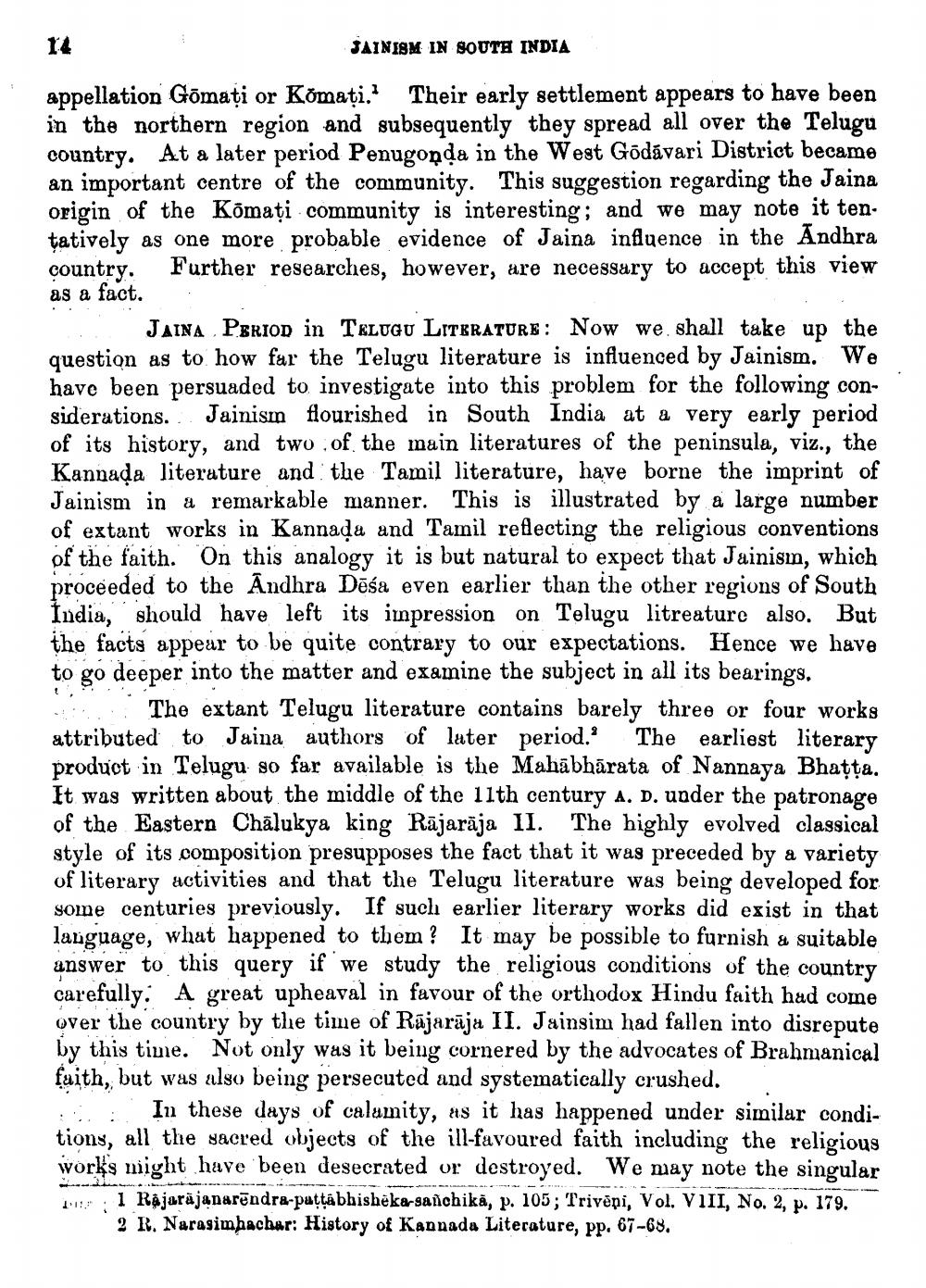________________
JAINISM IN SOUTH INDIA
appellation Gõmaţi or Komați." Their early settlement appears to have been in the northern region and subsequently they spread all over the Telugu country. At a later period Penugonda in the West Gödávari District became an important centre of the community. This suggestion regarding the Jaina origin of the Kōmați community is interesting; and we may note it ten. țatively as one more probable evidence of Jaina influence in the Andhra country. Further researches, however, are necessary to accept this view as a fact. .
JAINA PErion in TELUGU LITERATURE: Now we shall take up the question as to how far the Telugu literature is influenced by Jainism. We have been persuaded to investigate into this problem for the following considerations. Jainism flourished in South India at a very early period of its history, and two of the main literatures of the peninsula, viz., the Kannada literature and the Tamil literature, have borne the imprint of Jainism in a remarkable manner. This is illustrated by a large number of extant works in Kannada and Tamil reflecting the religious conventions of the faith. On this analogy it is but natural to expect that Jainism, which proceeded to the Andhra Dāśa even earlier than the other regions of South India, should have left its inpression on Telugu litreature also. But the facts appear to be quite contrary to our expectations. Hence we have to go deeper into the matter and examine the subject in all its bearings.
The extant Telugu literature contains barely three or four works attributed to Jaina authors of luter period. The earliest literary product in Telugu so far available is the Mahābhārata of Nannaya Bhatta. It was written about the middle of the 11th century A. D. under the patronage of the Eastern Chālukya king Rājarāja II. The highly evolved classical style of its composition presupposes the fact that it was preceded by a variety of literary activities and that the Telugu literature was being developed for some centuries previously. If such earlier literary works did exist in that language, what happened to them? It may be possible to furnish a suitable answer to this query if we study the religious conditions of the country carefully. A great upheaval in favour of the orthodox Hindu faith had come over the country by the time of Rājarāja II. Jainsim had fallen into disrepute by this time. Not only was it being cornered by the advocates of Brahmanical faith, but was also being persecuted and systematically crushed. . In these days of calamity, as it has happened under similar conditions, all the sacred objects of the ill-favoured faith including the religious works night have been desecrated or destroyed. We may note the singular D . I Rajarajanarēndra-pattabhisheka-sanchikā, p. 105; Trivēpi, Vol. VIII, No. 2, p. 179.
2 R. Narasimhachar: History of Kannada Literature, pp. 67-68.




